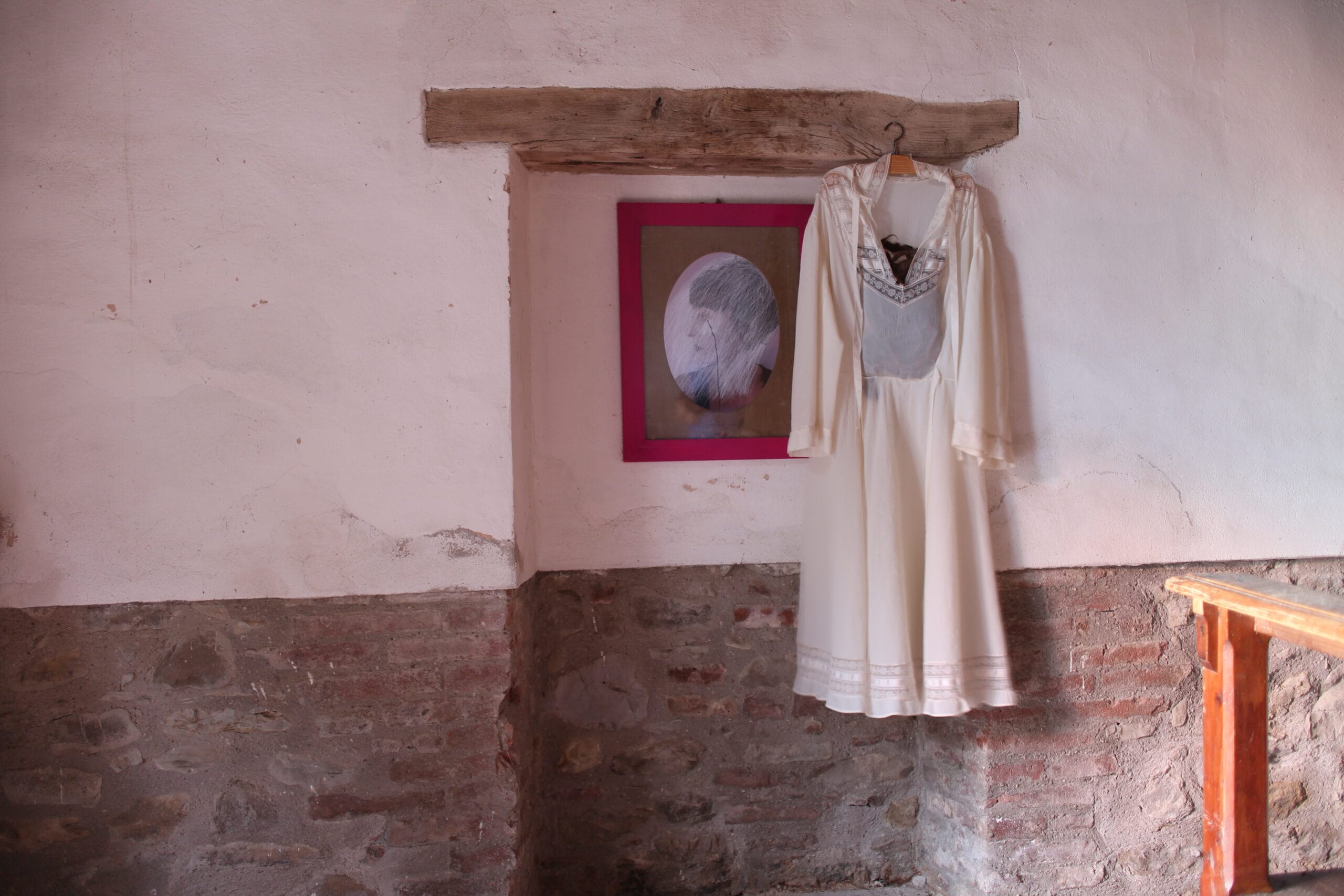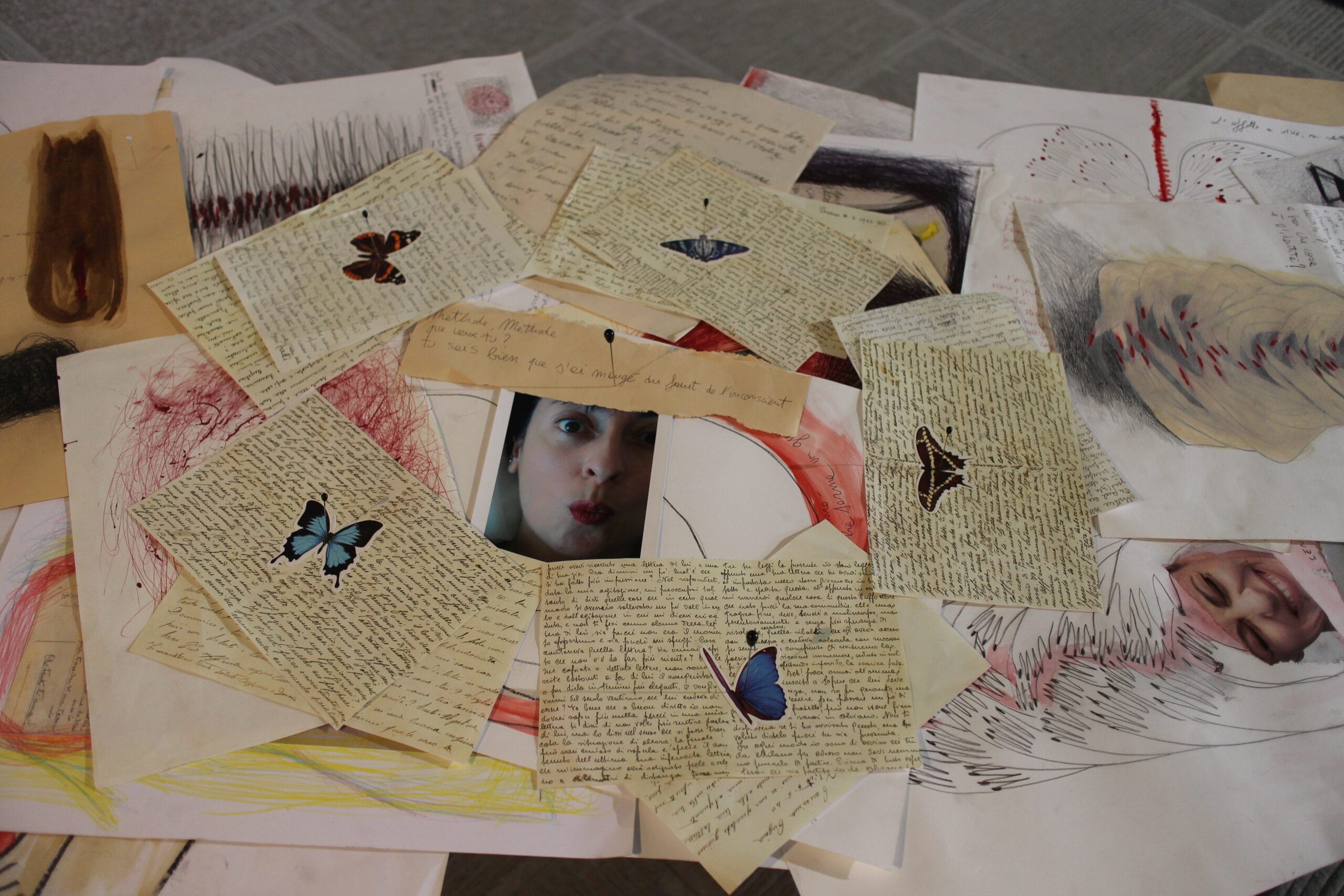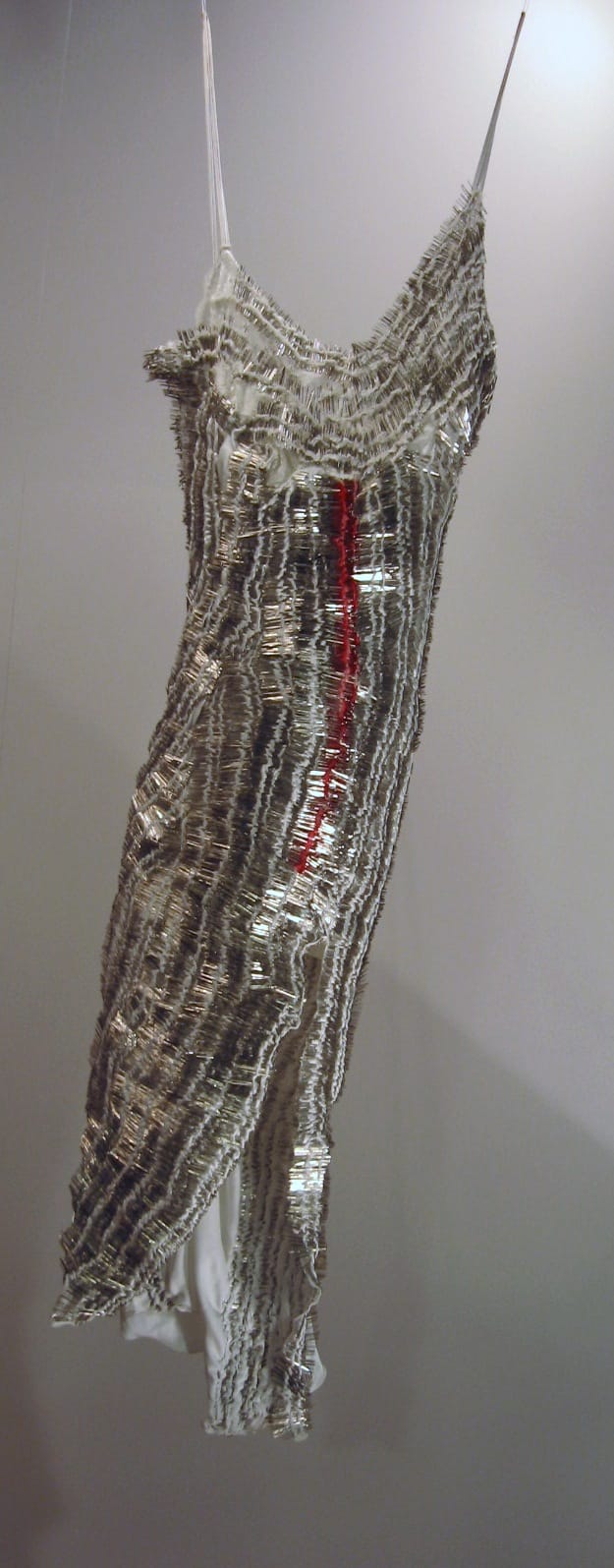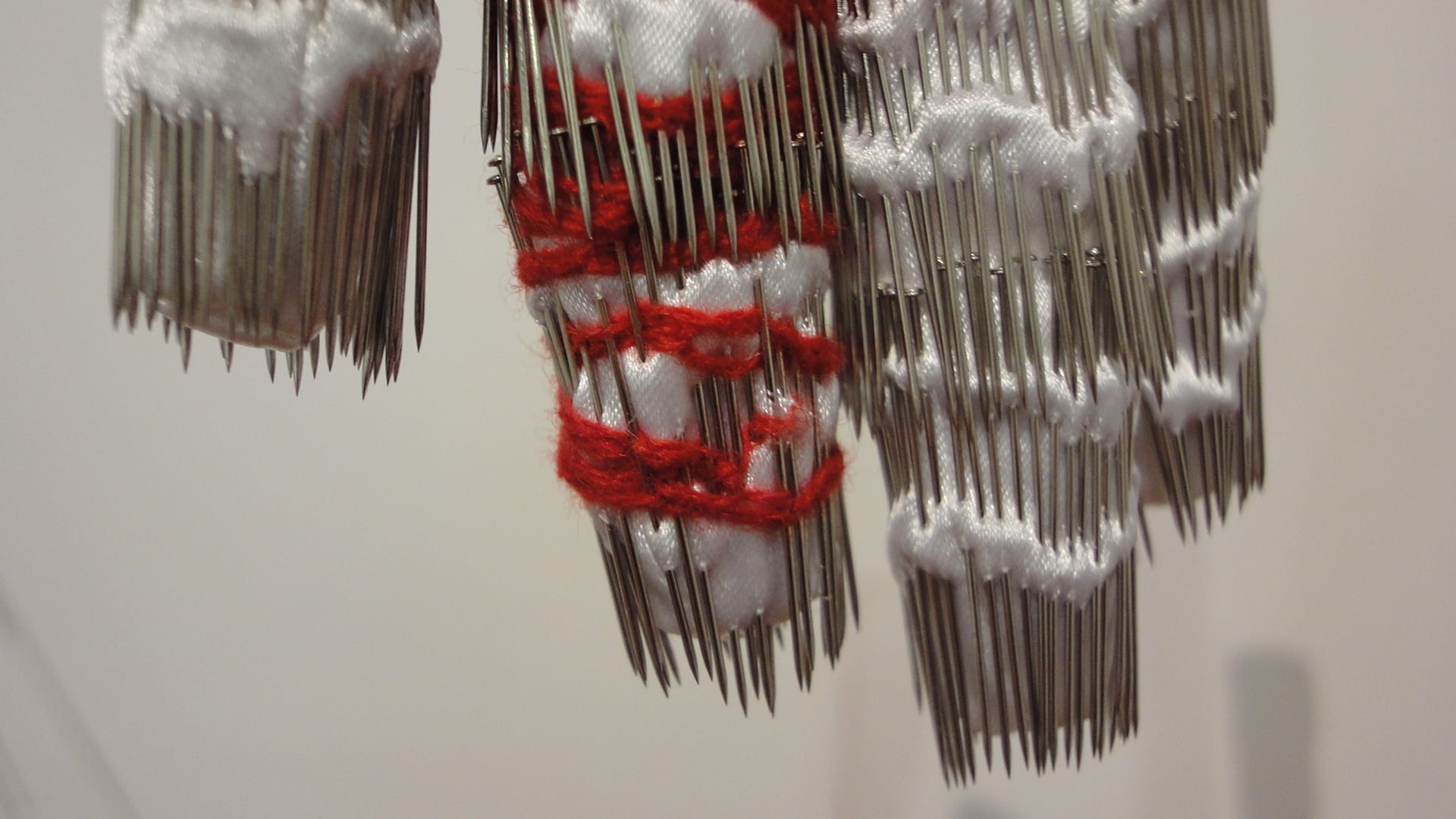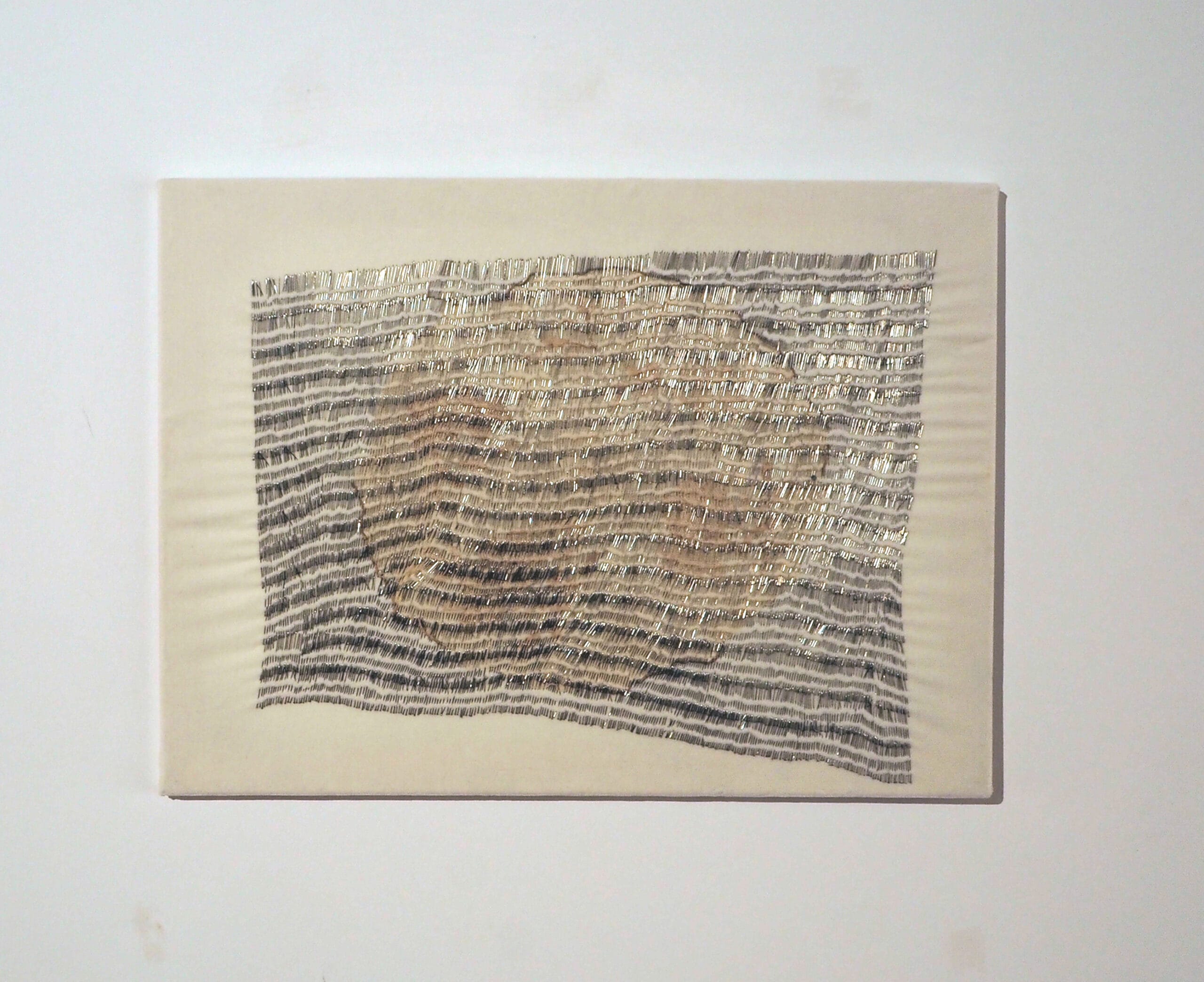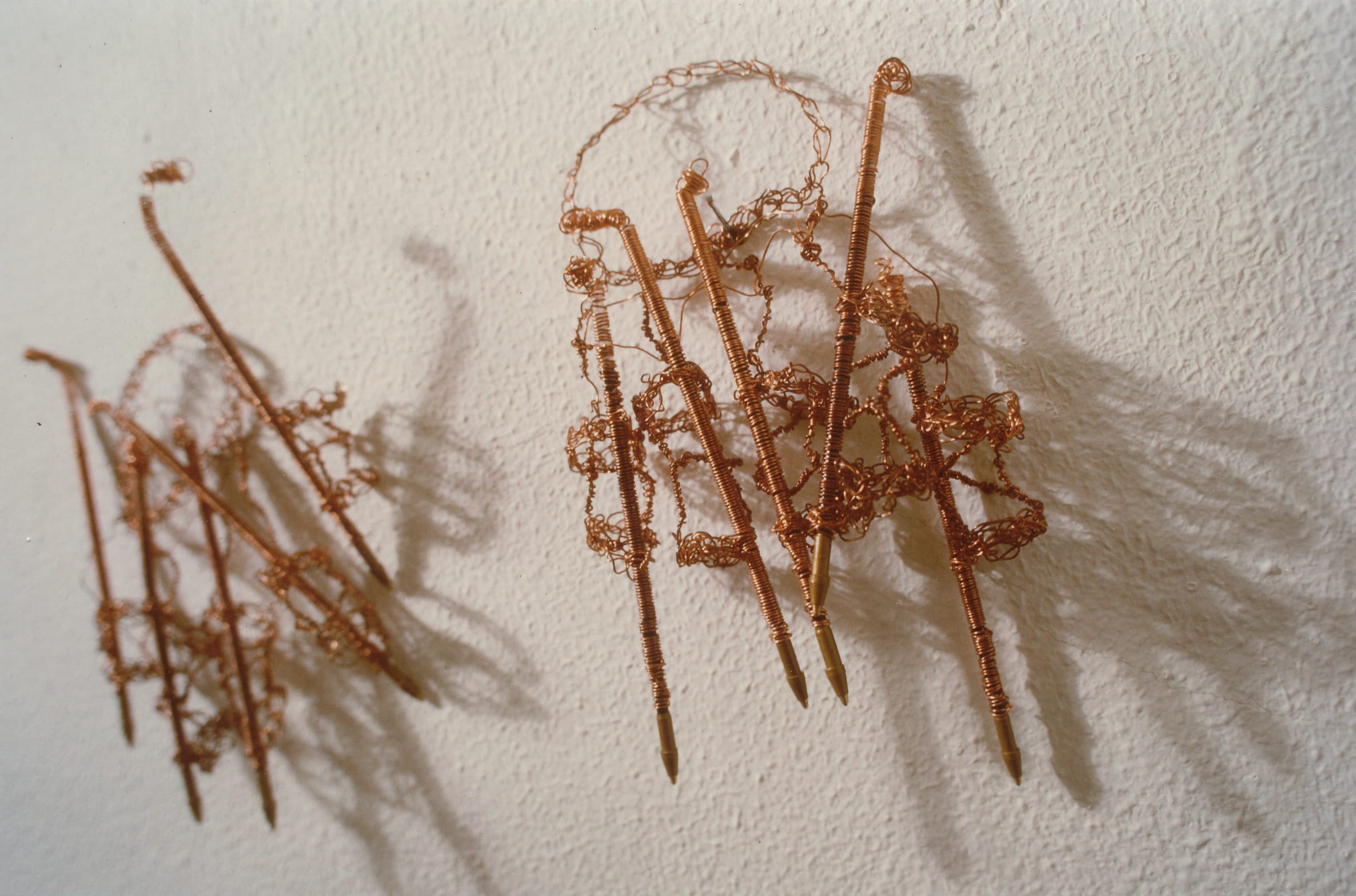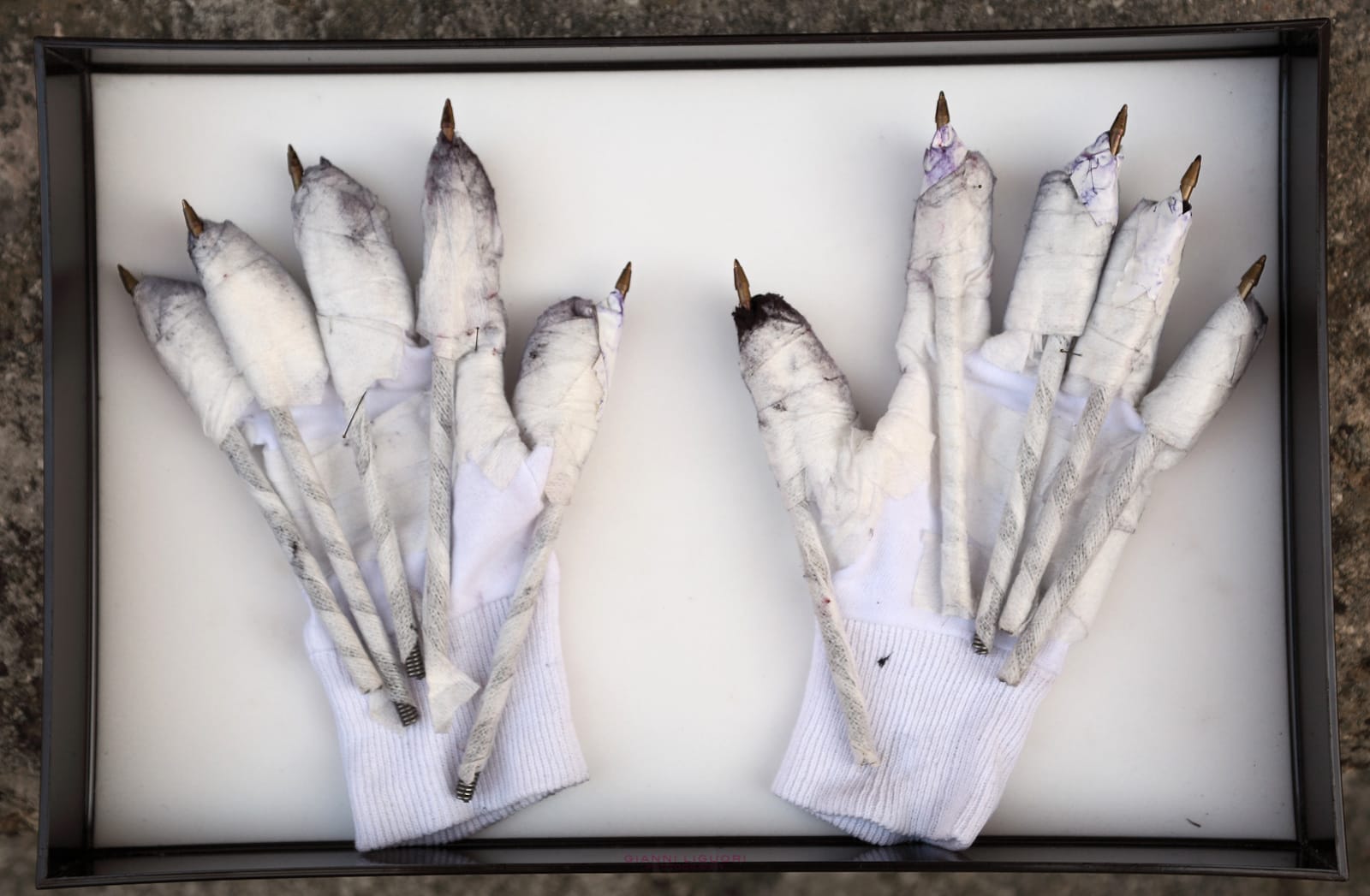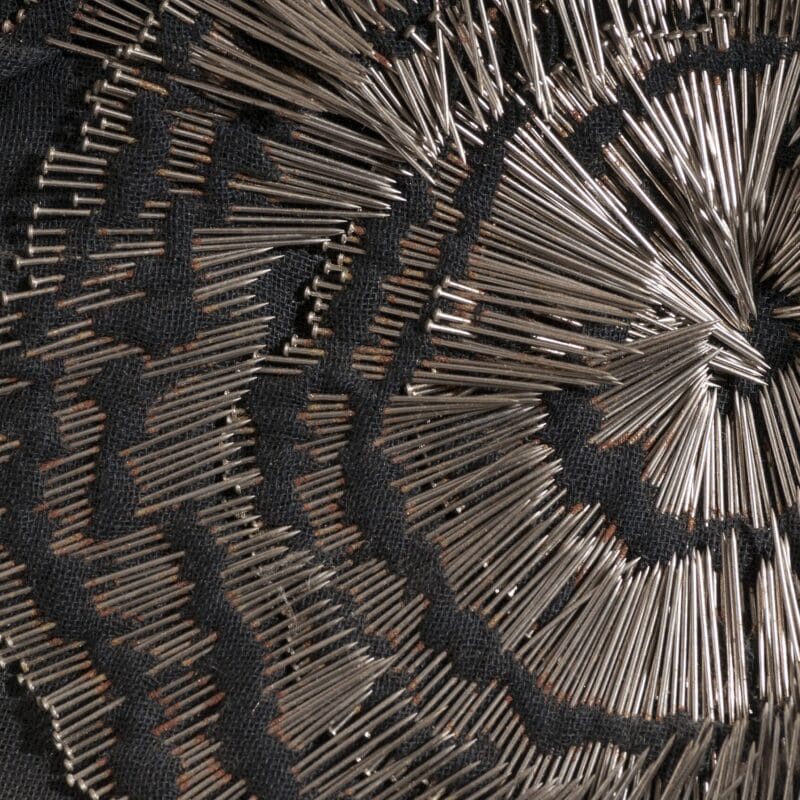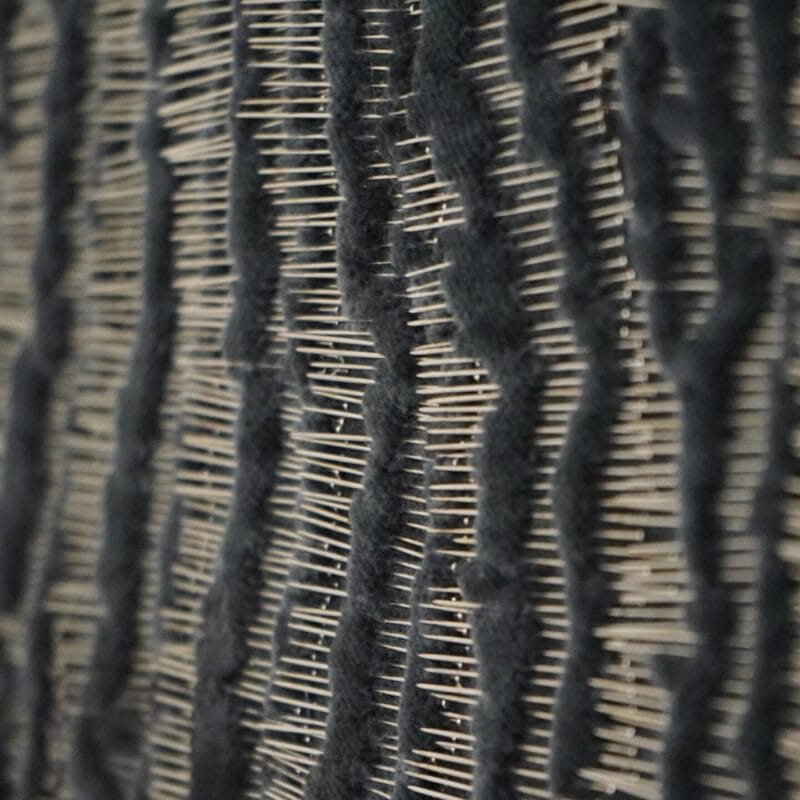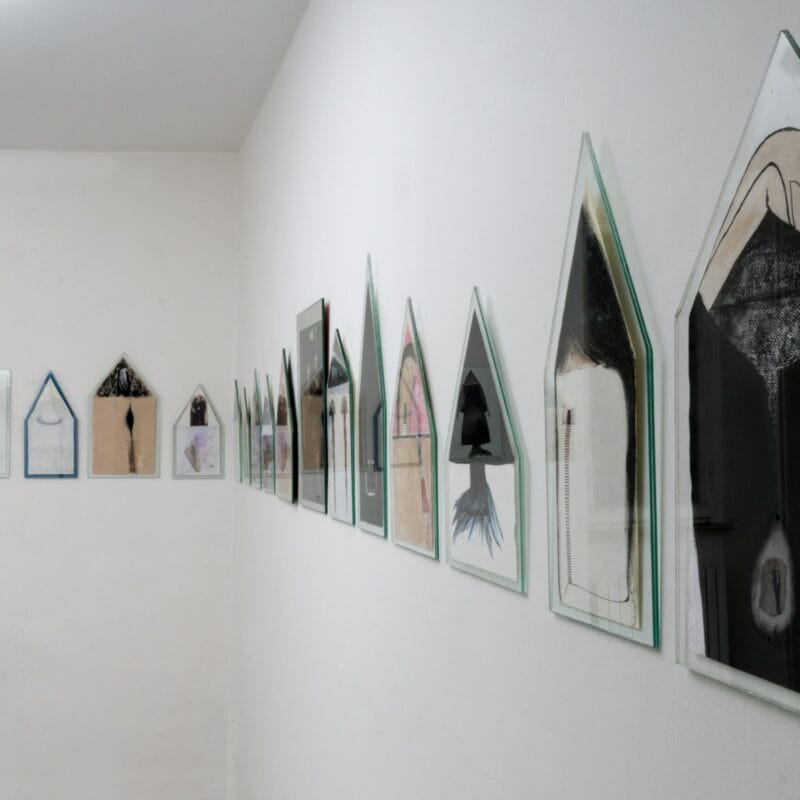INTERVIEW WITH LAURA PATACCHIA
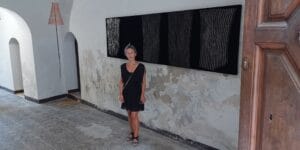
Laura Patacchia, was born in 1974 in Terni and attended the Pietro Vannucci Academy of Fine Arts in Perugia, graduating in Painting in 1999 and at the same time also attending the Ángel Bados course at the Academy of Fine Arts in Bilbao. In 2001 she was in Bosnia for a workshop as part of the Biennial of Young Artists from Europe and the Mediterranean and in the following years she alternated personal exhibitions and participating in collective projects, including international ones, in institutional and museum locations.
Laura, in your artistic research, the textile element – threads or fabrics – is the medium that allows you to investigate and make another reality visible. Can we say that it is not simply a different point of view on reality but a territory between the unconscious and the unknown that you intend to explore? Or what else?
The BODY is the medium. Everything passes through, around and through our body. Textile is just one of the many materials I use but only because it is linked to my personal history, to my ROOTS, I am not interested in it as a textile, it is a subject linked to MEMORY. In my research there is certainly a strong sensitivity towards the human condition, I try to go deep, even within myself, I look for the roots. The roots of a story that transcends the individual, to bring to light the most hidden.
I try to get off, to get to know myself, but I often escape or find that lump that prevents me from going all the way, so I remain suspended, as in a state of continuous rebirth, and with all the tensions and transformations that it entails.
I like to investigate intimacy to find that MYSTERIOUS and MAGICAL side of the human being, the one we always keep hidden, and that we keep safe perhaps in the darkest part of ourselves. On the other hand, doesn’t hiding mean to preserve and protect? It has a vital reserve function. Then the darkness becomes something else: it is what our story secretly says, and to look for it, it is necessary to get in touch with the night, the night of all things. The night holds our personal secrets, our desires, the most unspeakable dreams.
Through the practice of work I enter this confused area, made of glow and twilight, real and imaginary, disturbing and sparkling. I navigate on sight in this interlude, in this lump that is in the middle, where being is at the same time beast and cando
Speaking of the relationship between the work and the public, your works evoke a reflection on the dark and lesser-known side of phenomena and events. What message or meaning do you think your works convey? What would you like to convey to the user of the work?
I am not interested in giving a meaning or precise indications to the work, what interests me is sharing a problem of thought, in which a territory of questions opens up.
video of the installation “PortaMiaCasa” ph Luca Trauzzola 2015
From installations that physically occupied a large space, you moved on to smaller and less three-dimensional works. How has your relationship with the work space changed and why?
My work procedure has been and will always be open to installations.
The depth and the surface belong together, and I feel a strong attraction towards all those places that are human containers of past reveries, I love those rough walls, those bottomless rooms whitened by silence, those walls that sigh under their cosmic secrets. Exorcised from space, I work as if I were nothing more than an extension of it.
As it happened a few years ago with a series of installations for a widespread personal exhibition. It was called #ChiaveUmbra which was a viaticum through the discovery of the territory by exploring and marking a passage with one’s work.
Opening myself to a world of wonders, I placed one of my works in every place, intertwining my personal and artistic history with the stories of the places and people who hosted me.
Many years have passed since the first installations, when I was weaving threads or ropes, trying to maximize the tension of the sign, trying to close the space or tighten an opening, working on the play of the strength of the sign in dialogue with the objects I found on site , and today, as then it always happens in relation to the place.
It is a “hand-to-hand” with space and everything that contains it, even the invisible to the eye.
Our body becomes a vehicle in the world, “… as far as presence extends, there my body extends, because that space is his, as the space it appropriates in dancing is of the dancer”…. “Every act of mine reveals, in fact, that my presence is corporeal and that the body is the modality of my appearing …”.
Even the jobs that might seem to have an independent life are born from this relationship,
the matter is a territory to be explored, it is therefore a place, it has its own history, its own memory, has its own volume, occupies a physical and symbolic space.
With videos and video installations everything was born from a rapacious relationship with the world, as in a sort of enchantment I am attracted by the phenomena that often appear magical and I capture them, without building video effects, everything is real, direct, fast.
In your experimentation with materials and techniques you have landed on pins… and velvet. How do you choose the materials to express yourself (or are the materials to “apply”for it)? And do these have further intrinsic significance beyond function?
It is a ritual, waiting for time.
With the work of pins it is as if I were writing a DIARY of EXPERIMENTAL SOLITUDE AND SIGN: between the pins and the sign there is a comparative metamorphosis, the pins represent themselves as a human condition, mystical and of pain, but they also represent a condition of hope given their relationship with LIGHT.
In addition, they become traces of signs on an ever-changing surface.
Signs that are EMERSIONS of BRIGHTNESS and change according to the surface they inhabit.
In recent years I have started working with pins again, but I started many years ago, back in 1998.
In the early years I intervened on the surface of everyday objects to overturn their archetype, I felt the pin full of symbolic and aesthetic meaning and, completely covering the volume of these objects, it was as if I created a new skin, a LUMINOUS SKIN, it was as if you give them a chance for REBIRTH.
I was always looking for the image of symbols of a remote intimacy, distant and hidden in the depths of the human being, intimate objects that, thanks to the embroidery of pins, are covered with luminous and defensive armor.
“aspettAmi-tessiture” pins, petticoat, 2000, ph Laura Patacchia
The pin pierces, penetrates and then crosses the surface, creating a sort of embroidery, in the repetition of this procedure, the body of the work manifests itself in two surfaces: one visible and one hidden.
It is about “hiding by revealing”, through a FLOW of LUMINESCENCES.
Between the opaque of the fabric and the shiny of the steel there is a strong contrast, one absorbs the light and the other reflects it, thus an alternation of dark light manifests itself, like a light that comes out of the human abysses, and the canvases weep light.
The multiple light reflections make the perception of the work indefinite, a plot where all this is transformed into a condition of unspeakability. Thought it cannot define itself, it develops according to its linguistic or narrative needs.
I belong to a culture, where popular values mix with mystical and religious ones, a culture full of traditions, processions, embroidery, chants, secrets. The country of my grandparents, it is there that memories remain in the soul as traces, they are the mirror of the native sky.
“The testimony of eternal summer, where memories are all colored from the first time”. It is the archetype of simple happiness loaded with unanswered questions. Every small gesture, even a small one, slowly takes on a ritual intention, and everything transforms itself into an image.
It is a kind of empty architecture loaded with ghosts. An invertebrate space of time.
And how do you proceed from the material and the idea to the finished work – do you follow a detailed project or do you let yourself be guided by the evolution of the work?
It depends, each job has its own story.
The more the work is linked to a long time, the more possibilities of unexpected events open up, also following the suggestions of the error.
So it often happens that, however much it may start from a structured idea, this then changes following the reaction of the material itself.
The material is a living thing and it is not possible to build a relationship of dialogue with the material if one is not ready to listen to it. I love mistakes, accidents, they are epiphanies, open to surprise and wonder, break that rational rhythm and open to perdition and catharsis, here matter becomes a magical place.
Everything is always accompanied by drawing, but they are not projects, they are thoughts on paper that give free will to the imagination, and in the end they always become something else, they have their own life of their own.
In the relationship with the space and therefore the installations, I always let myself be guided by the demon of the place, I always prepare a field of study, which then explodes in a short and concentrated time, with great speed and with an emotional tension, almost anxious. I enter in apnea, and I only get out when the work is done.
The same is for videos.
There is always a work or an exhibition that more than others remains ‘on’ the artist. In your case, which one do you feel most part of yourself (and why)?
There are two works, both developed around 1998.
“Transudations” was born from my insomnia problem, I wanted to understand and see what form these thoughts that didn’t let me sleep, I wanted to bring to light the mass of intimate darkness.
I built writing gloves, first in copper and then fabric and iron, these gave me the possibility to write at the same time with ten fingers and leave traces of ink, I wore them as a prosthesis to go to bed and when the phase of half-sleep began, I began to transfer the impulses onto the sheet. It was as if from the tips of my fingers, together with the ink, all my discomfort was spraying away, the heat of my body and my skin were unconscious tools of erasing and shading.
This is where all my work started and this is still what it is searching.
The BODY is communication, it is like an ISLAND that becomes desiring habitability.
The body as a desire to continually seek itself out.
The other work is a tapestry of pins that after archiving it for many years, I had rediscovered , and to my surprise it was marked by rust, it had become something else and had taken its own shape.
The pins, crossing the surface, had left the marks of their passage, does the matter therefore have its own memory just like our skin? The most important sense of our body is touch, and the skin as an organ is the largest in the body. It has a memory and also a tactile experience.
I understood then that some materials need time to unite, settle with each other in a harmony that becomes structure.
Many other works are born with this procedure,it is also linked to the period of aging, to the AFTER. When I can unveil THE PLOT between LIGHT and ITS DARKNESS.
What project are you working on or would you like to carry out in the near future?
I am waiting for everything to be possible.
“Altro che farfalle nello stomaco” (Other than butterflies in the stomach) 2013, edited by Pino Bernabei 2018

